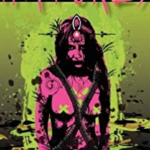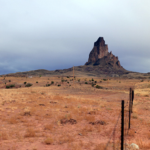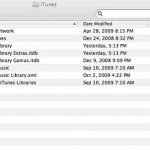2015
Bridging Superfund sites and video games, Alenda Chang’s essay revisits media- and computation-centered definitions of remediation to extend media and mediation past the pale of digital visual technology. Through a parallel consideration of what’s known as environmental remediation—cleaning up or cordoning off polluted sites, using technological or biotechnological methods—Chang argues that human and nonhuman bodies and ecosystems are equally enmeshed in practices of communication and transformation.
*This essay was selected by Cary Wolfe for his print Gathering in the first volume of Post-Digital: dialogues and debates from electronic book review (Bloomsbury 2020).
Stefan Herbrechter replies to John Bruni’s review essay, “Where do we find ourselves?” Building upon a dialogue that has developed across several manuscripts, Herbrechter pushes the discussion of critical posthumanism towards its radical implications. Not merely a new wave of theoretical fashion, Herbrechter identifies the posthuman as an intellectually necessary reframing of criticism altogether.
In this riposte to Herbrechter, John Bruni suggests that the pivot from humanism to posthumanism is not without peril. Thus, Bruni enjoins readers, even as the posthuman discourse incorporates them into its post-anthropocentric milieu, to “watch the critters” as the machine of capitalism trudges ever onward.
In his review of Stefan Herbrechter’s Posthumanism: A Critical Analysis, John Bruni addresses the technoscientific and philosophical varieties of posthumanism, and considers the necessity of moving beyond the “dehumanizing” effects of technocentric theories of cultural evolution. This critical project seeks to preserve freedom and agency, rejecting a concept of posthumanism as a side-effect of innovation in favor of one that sees change itself arising from social processes.
2014
In one half of a pair of critical reviews looking at recent titles in animal studies, Karl Steel examines Nicole Shukin's Animal Capital (Shukin reviews Steel in the other half). In particular, Steel looks at Shukin's biopolitical framework, and considers how that framework challenges not only our conception of what constitutes the animal, but also--and more to the bone--our conception of the capacity of fields like animal studies.
In one half of a pair of critical reviews looking at recent titles in animal studies, Nicole Shukin examines Karl Steel's How to Make a Human (Steel reviews Shukin in the other half). In particular, Shukin discusses Steel's framing of "the human" in terms of medieval violence, and she considers what that framing can offer to today's political and ethical conversations.
2013
John Bruni contends that Cary Wolfe’s latest book "Before the Law: Humans and Other Animals in a Biopolitical Frame” discusses the “legal issues that inform our relationships with non-human animals.” Bruni writes that in doing so Wolfe dissects the process of law-making and appearing “before the law” as animals, which might be potentially harmful and eclipse the existence of animals beyond the human sphere. According to Bruni what distinguishes Wolfe’s perspective is that he does not promote any form of “ecological self-righteousness” but rather asks the question whether we need to move beyond species-based discourses that constantly pits humans and animals against each other in an essentially unwinnable impasse—to a more ethical approach that may expand the "community of living."
2012
No need to get excited. According to Julie Reiser, The Affect Theory Reader offers the reader no end of theory but little affect. Reiser suggests this points to a broader and systemic problem in any reading or theory of affect.
2011
From the heavens to the stars, the number three has often been tied to the occult. Carrying on this tradition, Rob Swigart has brought together three books that investigate the anomalous, address the unexplained, and answer the impossible. The truth is in here.
From early modern texts to "publishing events," Madeleine Monson-Rosen's review follows Matt Cohen's exploration of the "networked wilderness." It turns out that the English colonists and native Americans were already information theorists, centuries before cybernetics emerged at MIT.
Beginning his review by reflecting on the book's cover art, John Bruni speculates that a punk aesthetic runs throughout Alaimo's posthuman environmentalism. Providing brief treatments of each chapter, he argues that the book's trans-corporeal understanding of the relationship between bodies and places disrupts "the very heart of what we know about ourselves."
In this review Veronica Vold charts the posthuman environmental ethic in Stacy Alaimo's Bodily Natures: Science, Environment, and the Material Self and notes how the text draws together issues of race, (dis)ability, and the environment in a way that disrupts the boundaries between bodies and places.
Is 'overinterpretation' good or bad? Is it even possible, and is it ever enough? (Or are we reading too much into this?) Clint Burnham shadows Colin Davis as he traces the interventions of a "wild bunch" of critics, theorists, and philosophers, who grapple with the question of what counts as a reading of a literary text.
In this review of Robert Chodat's Worldly Acts and Sentient Things, Stephen Dougherty argues that Chodat's inquiry could have profited from a deeper engagement with posthumanist thought.
2010
In his new book, Michael Wutz examines how the work of four canonical novelists - Norris, Lowry, Doctorow, and Powers - register the revolutions in 20th century media technology. Such an analysis, reviewer Joseph Conte suggests, is an important extension of Kittlerian media theory to the field of American literature.
John Bruni suggests that Cary Wolfe's new essay collection explores the various cognitive fictions of humanism and carves out a functional role for systems-influenced theory and art.
In this review of Cary Wolfe's new essay collection, What is Posthumanism?, Neil Badmington reflects on the ebb and flow of "the posthuman" and ponders what Wolfe's work suggests for the future of the field.
Timothy Morton offers a critical reading of Roderick Coover's video Canyonlands: Edward Abbey and the Defense of Wilderness. In the video's stark modernist form, Morton writes, "the hydroelectric engine of human progress still hums." What's needed now, he suggests, is a "Goth remix."
Roderick Coover, Larry McCaffery, Lance Newman and Hikmet Loe explore the question of how desert ecologies are shaped through creative expression and actions. They consider, among others, how works by Edward Abbey, Robert Smithson and William T. Vollmann offer models for engaging ecological questions through writing and art.
Countering the persistent popular notion that electronic literature is just reading the classics under glass, Daniel Punday advocates for greater innovation, and more authorial autonomy, at the level of book design. Insisting on "authors' rights to design the interface through which readers encounter their books," Punday argues that digital book publishing should strive to emulate the medial status of games, "which remain messy individuals."



